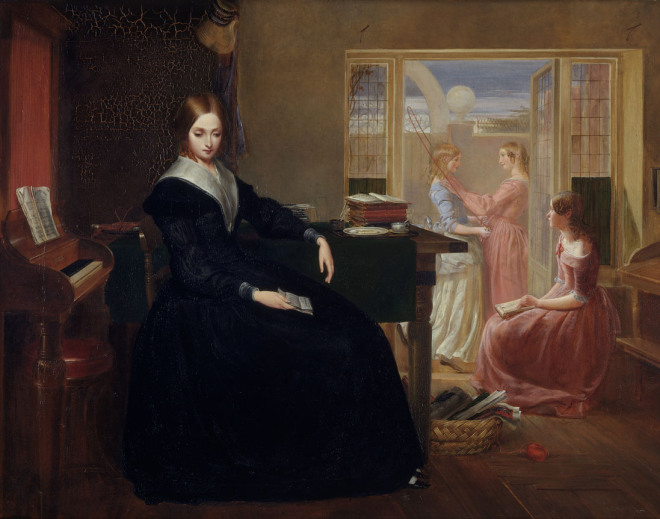What an insightful article! (Don’t get me wrong, I spent many a rainy summer afternoon as a young lady reading Phyllis Whitney’s Gothic Romances and wishing I could be a governess pining with love for a mysterious dark-haired widower.)
 The Governess by Richard Redgrave, 1844.
The Governess by Richard Redgrave, 1844.
During the 19th century, a gently bred young lady with no fortune, no family, and no prospects had few options for making her way in the world. She might hire herself out as a companion, of course. Or if she was particularly adept with a needle, she might take in a bit of sewing. Both were respectable, genteel occupations for a lady down on her luck and, as such, both are well-represented in historical novels. However, despite the undoubted romantic appeal of the penniless companion and the impoverished seamstress, neither position provides the wealth of literary possibilities inherent in the role of governess.
View original post 1,876 more words